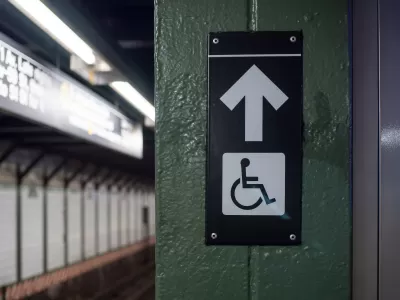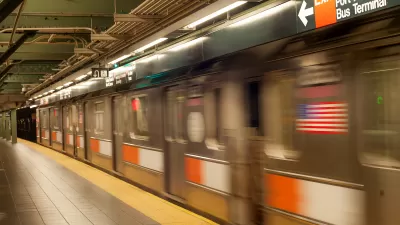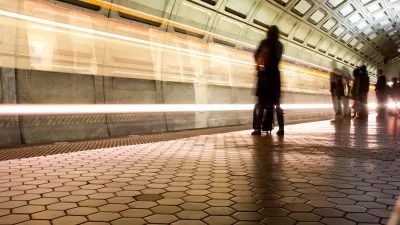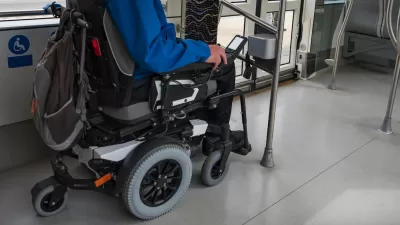Another recent ruling is forcing the agency to accelerate its efforts to make all New York subway stations accessible to people with disabilities and mobility issues.

In a long-overdue victory for people with disabilities, a federal judge ruled that New York City’s Metropolitan Transportation Authority (MTA) must equip 95 percent of its rail stations with elevators or ramps, reports Jose Martinez in The City.
“The MTA announced the settlement last June — agreeing to install elevators or ramps by 2055 at the more than 300 stations that are currently inaccessible to wheelchair users and others with mobility impairments — but it wasn’t made official until Friday.” Today, roughly one quarter of the system’s 500 stations are in compliance with the Americans with Disabilities Act (ADA), notes Martinez.
The settlement includes a requirement to meet certain milestones along the way to full compliance in 2055, such as a requirement that “15% of New York City Transit’s portion of future capital plan funding must now be set aside for accessibility upgrades.”
Since the passage of ADA in 1990, cities and agencies have lagged in bringing public transit facilities and the public right-of-way into compliance. Another federal lawsuit accuses the MTA of neglecting to properly maintain the elevators that do exist at stations. Last December, the agency released a plan detailing designs for elevators and other accessibility upgrades at some of its stations, funded in part by private developers.
FULL STORY: Judge Approves MTA Deal to Make Subways 95% ADA-Compliant by 2055

Study: Maui’s Plan to Convert Vacation Rentals to Long-Term Housing Could Cause Nearly $1 Billion Economic Loss
The plan would reduce visitor accommodation by 25,% resulting in 1,900 jobs lost.

North Texas Transit Leaders Tout Benefits of TOD for Growing Region
At a summit focused on transit-oriented development, policymakers discussed how North Texas’ expanded light rail system can serve as a tool for economic growth.

Why Should We Subsidize Public Transportation?
Many public transit agencies face financial stress due to rising costs, declining fare revenue, and declining subsidies. Transit advocates must provide a strong business case for increasing public transit funding.

How to Make US Trains Faster
Changes to boarding platforms and a switch to electric trains could improve U.S. passenger rail service without the added cost of high-speed rail.

Columbia’s Revitalized ‘Loop’ Is a Hub for Local Entrepreneurs
A focus on small businesses is helping a commercial corridor in Columbia, Missouri thrive.

Invasive Insect Threatens Minnesota’s Ash Forests
The Emerald Ash Borer is a rapidly spreading invasive pest threatening Minnesota’s ash trees, and homeowners are encouraged to plant diverse replacement species, avoid moving ash firewood, and monitor for signs of infestation.
Urban Design for Planners 1: Software Tools
This six-course series explores essential urban design concepts using open source software and equips planners with the tools they need to participate fully in the urban design process.
Planning for Universal Design
Learn the tools for implementing Universal Design in planning regulations.
Ascent Environmental
Borough of Carlisle
Institute for Housing and Urban Development Studies (IHS)
City of Grandview
Harvard GSD Executive Education
Toledo-Lucas County Plan Commissions
Salt Lake City
NYU Wagner Graduate School of Public Service





























